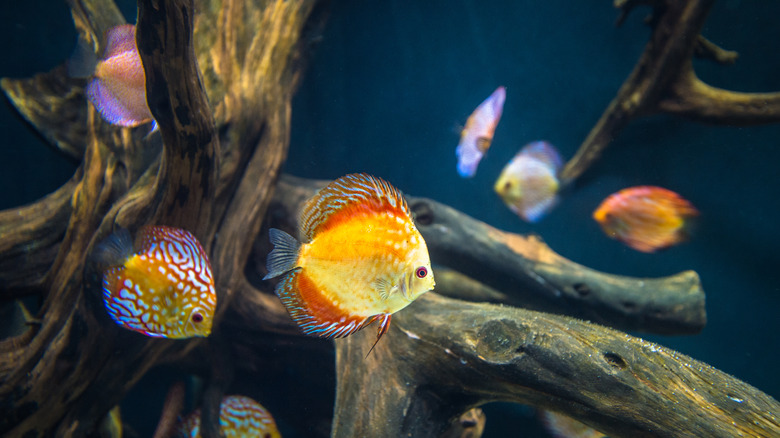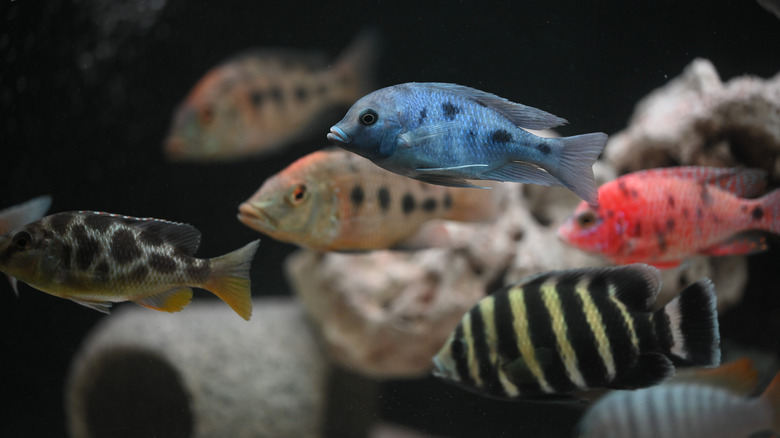How Fast Do Cichlids Grow?
Cichlids can add a touch of dramatic beauty to freshwater aquariums, but if you're a new cichlid owner, you may be wondering how long it will take for your fish to reach maturity. With around 3,000 varieties of cichlids, their maximum size ranges a lot — more specifically, from 2 inches to 36 inches in length. This means their growth rates also vary widely based on species and tank size. What's more, the sex of cichlids helps determine their maximum size. In some species, the female fish grow larger, while the male fish grow larger in other species.
Overall, assuming their diet and aquarium conditions are appropriate, some species reach their full size in about six months, while others take years, but let's go by size here. A few of the most popular species under 8 inches long for home aquariums include the dwarf, discus, angelfish, and peacock cichlids. Dwarf and discus cichlids top out at around 3.25 and between 4.8 and 6 inches, respectively. Dwarf cichlids take about four months to reach their full size, while discus cichlids take about a year. Angelfish take 12 to 18 months before maxing out at about 6 inches, while peacock cichlids grow to 6 to 7 inches in about three years.
Among the hundreds of larger popular cichlid varieties are the blood parrot, Oscar, and jaguar, all of which grow to 8 inches or longer. Both male and female blood parrot fish can grow about 8 inches long at a rate of about half an inch a month. Male and female Oscar fish are one of the fastest-growing cichlids, growing about an inch a month until reaching their full length of 10 inches. The jaguar is the largest of the aforementioned cichlid species, reaching a maximum length of about 14 to 16 inches. This species also grows at a rate of about an inch per month.
How to encourage cichlid growth
Regardless of what cichlid species you have in your home aquarium, there are ways to encourage their growth. Check a New World or African cichlid fry growth chart to determine how quickly you can expect your fish to reach full size. You should also consider the conditions of your aquarium, as well as your cichlid's diet. In general, the larger the aquarium and the better the diet, the more likely your fish is to meet or exceed the average size for its species.
Proper tank conditions are essential to helping your fish reach their full growth potential and life expectancy, so aim to replicate their natural conditions as closely as possible. For many types, this means a pebbly substrate and plenty of rock caves in which to hide. Water with low nitrates is also essential to facilitate rapid growth. Moreover, quality filtration and frequent water changes are key to reducing toxins that not only stunt growth potential but also stress cichlids, making them act more aggressively.
In terms of diet, it's best to feed your fish high-quality food, but don't overfeed it or you'll increase the level of tank nitrates and slow their growth. So, what should you do? Feed them twice a day while they're still growing for the best growth results. Cichlids' diet should consist of a variety of foods, including pellets, flakes, and frozen foods. With these factors at play, you should be able to help your cichlid reach its full potential.

